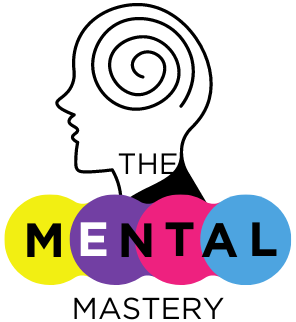How to Use Applied Behaviour Analysis (ABA) to Support Children with Autism
Introduction
Applied Behaviour Analysis (ABA) is an evidence-based approach that has been widely used to support children with Autism Spectrum Disorder (ASD). Grounded in the principles of learning and behaviour, ABA provides structured interventions to enhance communication, social skills, and adaptive behaviours while reducing challenging behaviours. ABA is still one of the most recommended treatments for kids with autism because of the wealth of data supporting its efficacy (Leaf et al., 2017). This article explores the principles of ABA, its effectiveness, and practical applications for parents and caregivers looking to implement ABA strategies for children with autism.

Understanding Applied Behaviour Analysis (ABA)
ABA is a therapeutic approach based on the science of behaviour and learning. It involves systematically applying interventions to improve socially significant behaviours while understanding how environmental factors influence those behaviours (Cooper, Heron, & Heward, 2020). The process follows the ABC Model:
- Antecedent: What happens before the behaviour occurs (e.g., a request to complete a task).
- Behaviour: The specific behaviour exhibited by the child (e.g., ignoring the request or engaging in a tantrum).
- Consequence: What happens after the behaviour (e.g., reinforcement or redirection).
By analyzing these elements, ABA therapists design interventions that encourage positive behaviours while reducing maladaptive ones.
Effectiveness of ABA in Supporting Children with Autism
Over the last ten years, studies have repeatedly demonstrated that ABA therapies can greatly enhance a range of developmental outcomes for kids with autism. Among the important findings are:
1. Behavioural Improvements
It has been demonstrated that ABA helps children with ASD exhibit more adaptive behaviours while decreasing problematic ones. A systematic review of ABA-based interventions found moderate to high efficacy in improving behavioural outcomes, particularly when therapy is intensive and implemented early in childhood (Sandbank et al., 2020).
2. Enhancing Social and Emotional Skills
One of the main issues facing kids with ASD is social difficulties. ABA programs designed to improve social interactions and emotional regulation have been effective in fostering engagement with peers and caregivers. According to a study by Schreibman et al. (2015), social initiation and intrinsic motivation are encouraged by naturalistic ABA interventions like Pivotal Response Treatment (PRT).
3. Improving Communication Skills
A lot of kids with autism have trouble communicating both verbally and nonverbally. Studies show that language-focused ABA therapies, like verbal behaviour therapy and the Picture Exchange Communication System (PECS), greatly improve communication skills (Tincani et al., 2018).
Key Components of ABA Therapy
Implementing ABA involves several structured steps to ensure success:
- Assessment and Individualized Treatment Planning
- ABA interventions begin with a thorough assessment, often using tools such as the Verbal Behaviour Milestones Assessment and Placement Program (VB-MAPP) to evaluate a child’s communication and learning abilities (Sundberg, 2014).
- Goal Setting
- Individualized goals are established based on the child’s unique needs. Goals may focus on communication, social skills, daily living skills, or academic abilities.
- Intervention Strategies
- ABA techniques vary based on the child’s needs. Some common approaches include:
- Discrete Trial Training (DTT): A structured approach where skills are broken into small, teachable steps with reinforcement (Smith, 2001).
- Natural Environment Teaching (NET): Learning occurs in a natural setting to promote skill generalization.
- Reinforcement Systems: Positive reinforcement is used to encourage desired behaviours (Iwata et al., 1994).
- ABA techniques vary based on the child’s needs. Some common approaches include:
- Data Collection and Progress Monitoring
- Continuous data collection ensures that interventions are effective and adjusted as needed (Cooper et al., 2020).
- Generalization of Skills
- To ensure that skills are applied in different settings, ABA focuses on practicing learned behaviours in multiple environments (Leaf et al., 2017).
Role of Parents and Caregivers
In ABA therapy, parental participation is essential. According to research, parent-mediated ABA therapies improve results and reduce family stress (Bearss et al., 2015). In order to improve social interactions and encourage positive behaviours, parents can include ABA concepts into their everyday routines.
Ethical Considerations in ABA
Although ABA is universally acknowledged to be a successful intervention, its application has given rise to ethical questions. Instead, than using coercion, modern ABA stresses a child-centred approach that respects each person’s needs and choices and emphasises positive reinforcement (Schuck et al., 2021). ABA interventions must be customised to be respectful, empowering, and in line with the well-being of the child.
Cost Considerations and Accessibility
Since ABA therapy frequently requires for 20–40 hours of intervention each week, it can be expensive. Early intensive ABA programs, however, have been shown to lower the demand for specialised services later in life, which can result in long-term cost savings (Peters-Scheffer et al.). Insurance coverage for ABA is growing, and many nations now acknowledge it as a medically essential intervention (Mandell & Knapp, 2015).
Conclusion
For kids with autism, Applied Behaviour Analysis is still a vital intervention because it provides organised, research-backed methods to enhance behavioural and cognitive development. ABA helps kids with autism develop critical abilities that enhance their quality of life through individualised assessments, focused interventions, and family participation. It is essential to apply ABA ethically and modify therapies to fit the individual needs and skills of every kid as research advances.
References
Bearss, K., Burrell, T. L., Challa, S. A., Postorino, V., Gillespie, S. E., Crooks, C., … & Scahill, L. (2015). Feasibility of parent training via telehealth for children with autism spectrum disorder. Journal of Autism and Developmental Disorders, 45(12), 3877-3890.
Cooper, J. O., Heron, T. E., & Heward, W. L. (2020). Applied behaviour analysis (3rd ed.). Pearson.
Iwata, B. A., Vollmer, T. R., & Zarcone, J. R. (1994). Analysis and treatment of severe behaviour disorders. Journal of Applied Behaviour Analysis, 27(2), 197-209.
Leaf, J. B., Leaf, R., McEachin, J., Taubman, M., Ala’i-Rosales, S., Ross, R. K., & Weiss, M. J. (2017). Applied behaviour analysis is a science and, therefore, progressive. Journal of Autism and Developmental Disorders, 47(2), 239-250.
Mandell, D. S., & Knapp, M. (2015). Estimating the economic costs of autism. Autism Spectrum Disorder in Mid and Later Life, 40, 257-272.
Peters-Scheffer, N., Didden, R., Korzilius, H., & Sturmey, P. (2012). Cost comparison of early intensive behavioural intervention and treatment as usual for children with autism spectrum disorder in the Netherlands. Research in Developmental Disabilities, 33(6), 1763-1772.
Sandbank, M., Bottema-Beutel, K., Crowley, S., Cassidy, M., Dunham, K., Feldman, J. I., … & Woynaroski, T. G. (2020). Project AIM: Autism intervention meta-analysis for studies of young children. Psychological Bulletin, 146(1), 1.
Schreibman, L., Dawson, G., Stahmer, A. C., Landa, R., Rogers, S. J., McGee, G. G., … & Halladay, A. (2015). Naturalistic developmental behavioural interventions. Journal of Autism and Developmental Disorders, 45(8), 2411-2428.







